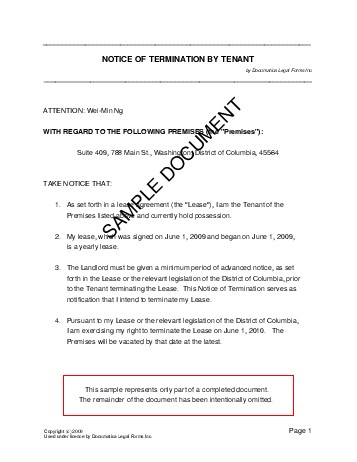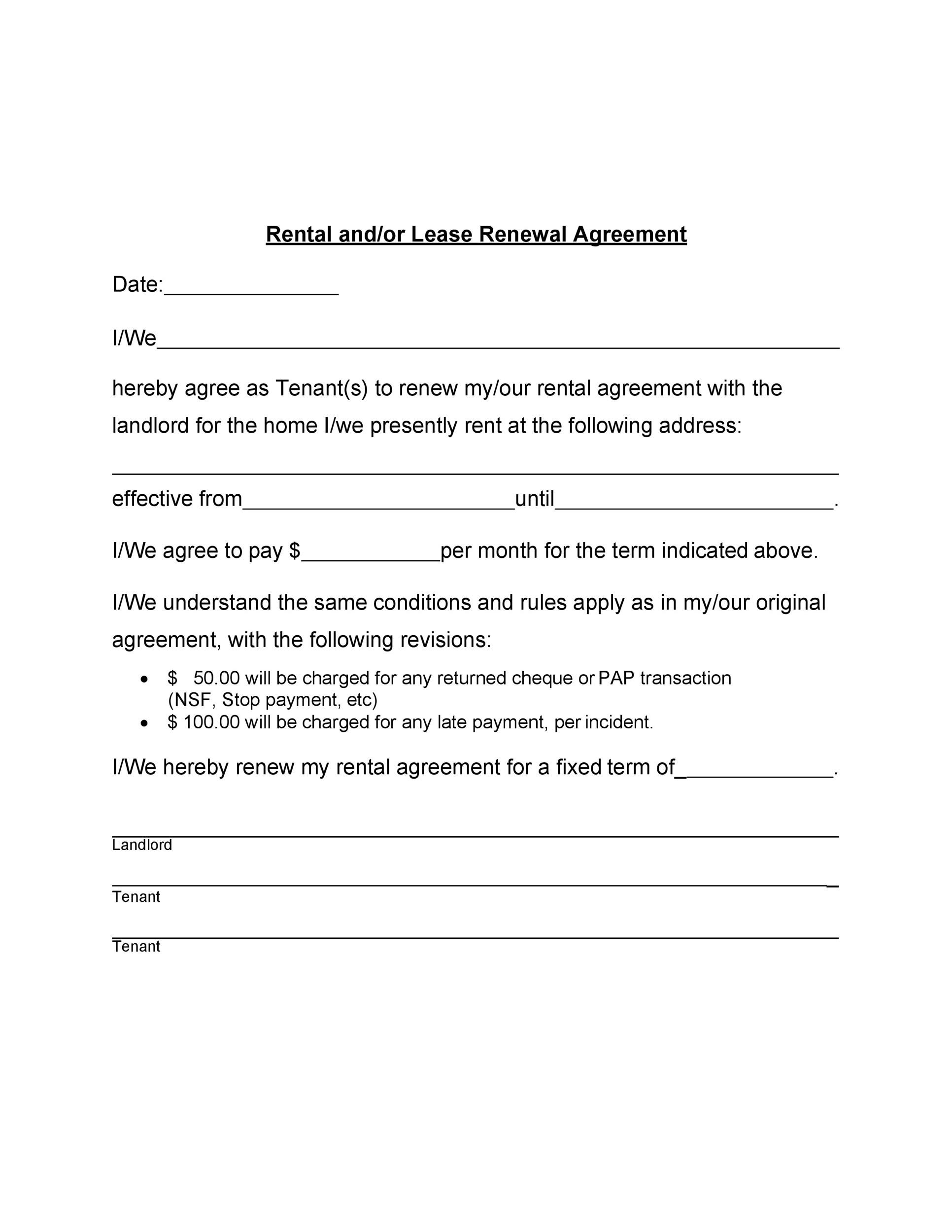Landlord-tenant relationship
Nurturing a Positive Landlord-Tenant Partnership

Nurturing a Positive Landlord-Tenant Partnership
Establishing and maintaining a positive relationship between landlords and tenants is essential for a harmonious living arrangement. This article explores key aspects of fostering a healthy landlord-tenant partnership, ensuring a mutually beneficial experience for both parties.
Clear Communication from the Start
The foundation of any positive relationship is clear communication. From the beginning, landlords and tenants should establish open channels for effective dialogue. Clearly outline expectations, responsibilities, and any specific terms in the lease agreement. This proactive approach helps prevent misunderstandings and sets the stage for a positive connection.
Timely Responsiveness
Responsiveness is crucial in maintaining a positive landlord-tenant relationship. Landlords should address tenant concerns and maintenance requests promptly. Similarly, tenants should communicate any issues or questions in a timely manner. This mutual responsiveness builds trust and demonstrates a commitment to cooperation.
Respect for Privacy
Respecting each other’s privacy is a fundamental aspect of a positive relationship. Landlords should provide adequate notice before entering a rented property for inspections or repairs, allowing tenants to prepare. Likewise, tenants should respect the landlord’s property and adhere to agreed-upon guidelines for property use.
Transparent Lease Terms and Conditions
Transparency in lease terms is vital for a positive landlord-tenant relationship. Both parties should fully understand and agree to the terms outlined in the lease agreement. This includes rent payments, maintenance responsibilities, and any specific rules governing the property. A clear understanding reduces the likelihood of disputes down the line.
Proactive Maintenance and Repairs
Landlords play a key role in maintaining the property, but tenants also have responsibilities. Tenants should report maintenance issues promptly, allowing landlords to address them in a timely manner. Landlords, in turn, should conduct regular property inspections to identify and address potential issues before they escalate.
Flexibility and Understanding in Difficult Times
Life is unpredictable, and unforeseen circumstances can arise for both landlords and tenants. Building a positive relationship involves showing flexibility and understanding during challenging times. Landlords may consider options like rent adjustments in times of economic hardship, fostering goodwill and loyalty from tenants.
Fair Handling of Security Deposits
The handling of security deposits is a common source of disputes. Landlords should clearly communicate the conditions under which deductions may occur and provide an itemized list when returning the deposit. Tenants, on the other hand, should strive to leave the property in good condition, minimizing the need for deductions.
Open Negotiation for Lease Renewals
When approaching the end of a lease term, open negotiation for lease renewals can strengthen the landlord-tenant relationship. Both parties should discuss any changes in rent, lease terms, or conditions. This collaborative approach fosters a sense of partnership and ensures that the lease remains fair and reasonable for both sides.
Respectful Conflict Resolution
In any relationship, conflicts may arise. It’s essential to approach conflict resolution with respect and a willingness to find mutually agreeable solutions. Landlords and tenants should be open to mediation or legal advice when necessary, always prioritizing a resolution that maintains the integrity of the partnership.
Building a
Navigating Lease Terms: Clearing the Confusion

Navigating Lease Terms: Clearing the Confusion
Lease terms are a critical aspect of any rental agreement, laying the foundation for the relationship between landlords and tenants. However, these terms can often be complex, leading to confusion and misunderstandings. In this article, we’ll explore the importance of lease terms clarification and how it contributes to a harmonious landlord-tenant relationship.
Understanding Lease Terms
Lease terms encompass the specific conditions and rules that both parties agree to follow during the duration of a lease agreement. This includes details such as the length of the lease, rent amount, payment due dates, maintenance responsibilities, and any special provisions. It’s crucial for both landlords and tenants to have a clear understanding of these terms to avoid disputes down the line.
The Importance of Clear Communication
Clear communication is key to preventing misunderstandings related to lease terms. Both parties should take the time to discuss and clarify any ambiguous language or provisions in the lease agreement before signing. This proactive approach sets the stage for a positive and transparent relationship throughout the duration of the lease.
Seeking Professional Assistance
For those unfamiliar with legal jargon or complex lease terms, seeking professional assistance is a wise decision. Whether it’s a landlord consulting with a real estate attorney or a tenant seeking advice from a tenant’s association, having a professional review the lease agreement can provide clarity and ensure that all parties are fully aware of their rights and obligations.
Addressing Specific Lease Provisions
Certain lease provisions may require special attention and clarification. These could include rules related to subleasing, maintenance responsibilities, or conditions for terminating the lease early. By addressing these specifics and ensuring both parties are on the same page, potential conflicts can be minimized.
Lease Terms Clarification: A Two-Way Street
It’s important to recognize that lease terms clarification is a responsibility shared by both landlords and tenants. While landlords must provide clear and comprehensible lease agreements, tenants should actively seek clarification on any terms they find confusing or ambiguous. Open communication is crucial for fostering a positive and cooperative living arrangement.
Utilizing Online Resources for Clarification
In the digital age, online resources can be valuable tools for lease terms clarification. Websites like Walenshipnigltd.com offer informative content and resources that can help both landlords and tenants understand common lease terms, legal requirements, and best practices. Visit Walenshipnigltd.com for guidance on navigating lease agreements.
Common Lease Misconceptions
Misconceptions about lease terms often stem from assumptions or lack of information. It’s essential for both parties to address any misconceptions promptly. This can be achieved through open and honest communication, potentially averting conflicts that may arise due to misunderstandings.
Documenting Clarifications in Writing
Verbal agreements can sometimes lead to misunderstandings, so it’s advisable to document any lease terms clarifications in writing. This ensures that both parties have a clear record of the discussions and any agreed-upon adjustments to the original lease agreement.
Regular Lease Reviews
Lease agreements are not static documents; they can be reviewed and updated as necessary. Regular
Navigating Lease Termination Conditions: A Comprehensive Guide

Understanding Lease Termination Conditions: A Comprehensive Guide
Lease termination conditions are a crucial aspect of the landlord-tenant relationship, outlining the circumstances under which a lease can be legally concluded. This guide aims to provide a comprehensive overview of lease termination conditions, shedding light on the key considerations for both landlords and tenants.
1. Importance of Clear Terms in the Lease Agreement
The foundation of smooth lease termination lies in the clarity of the lease agreement. Both landlords and tenants must understand the terms and conditions specified in the document. This includes provisions related to notice periods, reasons for termination, and any associated penalties or obligations.
2. Legal Requirements and Notice Periods
Lease termination conditions are often governed by legal requirements, and these vary based on jurisdiction. It’s imperative to be aware of the notice periods mandated by local laws. Typically, landlords and tenants must provide advance notice before terminating a lease. Understanding and adhering to these legal requirements is crucial to avoid disputes.
3. Tenant Responsibilities and Property Condition
Tenants play a significant role in the lease termination process. The lease agreement may specify conditions related to the property’s condition upon departure. Tenants are usually responsible for returning the property in the same state as when they moved in, with allowances for reasonable wear and tear.
4. Landlord’s Obligations and Return of Security Deposit
Landlords, too, have responsibilities during the lease termination process. This includes conducting a thorough inspection of the property and returning the security deposit to the tenant, minus any legitimate deductions for damages or unpaid rent. Clearly outlining these obligations in the lease agreement is essential for a smooth transition.
5. Early Termination Clauses and Penalties
Lease agreements may include early termination clauses, allowing either party to end the lease before the agreed-upon term. However, such clauses often come with penalties or financial repercussions. Both landlords and tenants should be aware of these clauses and the associated costs, providing transparency and avoiding surprises.
6. Mutual Agreement for Lease Termination
In some cases, landlords and tenants may mutually agree to terminate the lease before the scheduled end date. This could be due to changes in circumstances for either party. Clearly documenting this mutual agreement and ensuring that both parties are on the same page is essential to prevent misunderstandings.
7. Eviction as a Last Resort
If a tenant violates the terms of the lease, eviction may be the last resort for landlords. However, specific conditions must be met for a legal eviction. It’s crucial for landlords to follow the legal process and adhere to local regulations to avoid legal complications.
8. Documentation and Communication
Clear communication and thorough documentation are paramount in navigating lease termination conditions. Both landlords and tenants should communicate any intentions to terminate the lease in writing and keep a record of all correspondences. This documentation can serve as crucial evidence in case of disputes.
9. Seeking Legal Advice When Needed
In complex situations or when facing challenges in the lease termination process, seeking legal
Navigating Lease Termination: Essential Guidelines for Landlords and Tenants

Understanding Lease Termination: A Comprehensive Guide
Lease termination is a significant aspect of the landlord-tenant relationship, requiring clear communication and adherence to legal guidelines. This comprehensive guide provides essential information for both landlords and tenants on navigating the lease termination process smoothly.
Reviewing Lease Agreement Terms
The foundation for a successful lease termination lies in a thorough understanding of the lease agreement. Both landlords and tenants should review the terms and conditions outlined in the lease document. This includes specific provisions related to termination notice periods, penalties, and any requirements for ending the lease agreement.
Notifying the Other Party in Advance
One of the primary lease termination guidelines is providing advance notice. Landlords typically require tenants to provide a written notice of their intent to terminate the lease within a specified timeframe. Similarly, landlords are obligated to notify tenants in advance if they choose not to renew the lease. Clear communication about termination dates is crucial for both parties to make informed decisions.
Understanding Notice Periods
Notice periods for lease termination vary and are often specified in the lease agreement. Common notice periods are 30, 60, or 90 days. It’s essential for both landlords and tenants to adhere to these timelines to avoid legal complications. Providing adequate notice ensures that all parties have sufficient time to make arrangements for the transition.
Handling Security Deposits
Lease termination involves the proper handling of security deposits. Landlords must follow state laws regarding the return of security deposits. This may include conducting a final inspection of the property, deducting any necessary charges for damages, and returning the remaining deposit to the tenant within the stipulated timeframe.
Conducting Property Inspections
Prior to the actual termination date, landlords may conduct a final property inspection. This inspection helps identify any damages beyond normal wear and tear. Both parties should participate in this walkthrough to discuss any potential issues, ensuring transparency and minimizing disputes over security deposit deductions.
Addressing Outstanding Payments
Lease termination requires settling any outstanding financial obligations. Tenants should ensure that all rent payments are up-to-date, and landlords must address any outstanding bills or charges the tenant may owe. Clear communication regarding financial matters contributes to a smooth termination process.
Returning Keys and Possession of the Property
On the termination date, tenants are typically expected to return all keys and vacate the property. Landlords, in turn, should be prepared to take possession of the property. Coordinating the return of keys and the property handover ensures a clear transition and helps avoid misunderstandings.
Finalizing Legal Documentation
Proper documentation is crucial for protecting the interests of both parties. After the lease termination process is complete, landlords should provide tenants with a final statement of account, detailing any deductions from the security deposit and the return of any remaining funds. Tenants may also receive a letter confirming the termination of the lease.
Seeking Legal Advice if Necessary
In complex situations or disputes, seeking legal advice is advisable. Both landlords and tenants may benefit from consulting with legal professionals who
Navigating Rental Property Regulations: A Comprehensive Guide

Navigating Rental Property Regulations: A Comprehensive Guide
In the dynamic landscape of real estate, understanding and adhering to rental property regulations is crucial for both landlords and tenants. This comprehensive guide will walk you through the key aspects of these regulations, providing valuable insights to ensure a smooth and legal rental experience.
Understanding Local Laws
Before diving into the world of rental property regulations, it’s essential to recognize that these laws vary from one location to another. Each city, state, or country may have its own set of rules governing landlord-tenant relationships. Therefore, it’s crucial to familiarize yourself with the specific regulations applicable to your area.
Lease Agreements: The Foundation of Legal Protections
A well-drafted lease agreement serves as the foundation for a successful landlord-tenant relationship. This document outlines the terms and conditions of the rental arrangement, including rent amount, payment due dates, maintenance responsibilities, and more. It’s imperative for both parties to thoroughly review and understand the lease agreement before signing.
Tenant Rights and Responsibilities
Tenant rights are an integral aspect of rental property regulations. It’s crucial for landlords to respect these rights, which often include the right to a habitable living space, privacy, and protection against unfair eviction. Likewise, tenants have responsibilities outlined in the lease agreement, such as timely rent payments and proper property maintenance.
Landlord Obligations and Responsibilities
Landlords, too, have specific obligations to fulfill. This may include ensuring the property meets health and safety standards, promptly addressing maintenance issues, and respecting the tenant’s right to quiet enjoyment. Understanding and fulfilling these obligations is essential for a positive landlord-tenant relationship and legal compliance.
Security Deposits: Guidelines and Best Practices
Security deposits are a common source of disputes between landlords and tenants. This section explores the regulations surrounding security deposits, including the maximum allowable amount, the timeline for refunding, and the conditions under which deductions are permissible. Both parties should be well-informed about these regulations to prevent conflicts.
Rent Increases: Legal Constraints and Considerations
Landlords often need to adjust rent prices due to various factors such as property value appreciation or increased maintenance costs. However, rental property regulations impose constraints on the frequency and magnitude of rent increases. This part of the guide delves into the legal considerations surrounding rent adjustments, offering clarity on what’s permissible.
Navigating Evictions: Legal Procedures and Tenant Protections
Evictions are a last resort, but when necessary, landlords must follow legal procedures. This section outlines the steps involved in an eviction, emphasizing the importance of adherence to regulations to protect both parties. Tenant protections during the eviction process are also discussed to ensure fair and lawful proceedings.
Stay Informed and Seek Professional Advice
Rental property regulations are subject to change, so it’s crucial to stay informed about updates in local laws. Additionally, seeking professional advice from legal experts or property management professionals can provide valuable insights and guidance tailored to your specific situation.
In conclusion, navigating rental property regulations is a fundamental aspect of a successful and legally compliant landlord-tenant relationship. By understanding
Navigating Lease Renewal Deadlines: Essential Guidelines

Understanding the Significance of Lease Renewal Deadlines
Lease renewal deadlines are a crucial aspect of the rental process, impacting both landlords and tenants. This guide aims to shed light on the importance of these deadlines and provide essential guidelines for navigating this phase successfully.
The Impact on Landlords and Tenants
Lease renewal deadlines play a pivotal role in the lives of both landlords and tenants. For landlords, it ensures a steady income stream and the opportunity to maintain a positive relationship with responsible tenants. Tenants, on the other hand, face decisions about whether to stay or explore other housing options.
Setting Clear Expectations in Lease Agreements
One of the key aspects of managing lease renewal deadlines is establishing clear expectations in the initial lease agreement. Clearly outline the process and timeframe for lease renewals to avoid confusion and ensure both parties are on the same page. This proactive approach sets the stage for a smoother renewal process.
Early Communication Benefits Both Parties
Effective communication is the cornerstone of successful lease renewals. Landlords and tenants should engage in open and transparent communication well before the actual deadline approaches. This allows for discussions about potential changes in terms, rental adjustments, or any concerns either party may have.
Offering Incentives for Timely Renewals
To encourage timely lease renewals, landlords may consider offering incentives to tenants. This could include a modest rent discount, upgraded amenities, or other perks that demonstrate appreciation for the tenant’s commitment to renewing the lease. Such incentives can contribute to a positive landlord-tenant relationship.
The Consequences of Missing Deadlines
Understanding the consequences of missing lease renewal deadlines is essential. For tenants, failing to initiate the renewal process in a timely manner may result in the loss of the rental unit to another interested party. Landlords may face challenges in finding a new tenant quickly, potentially leading to income gaps.
Automated Reminders and Technology Solutions
In the digital age, leveraging technology can streamline the lease renewal process. Landlords can utilize automated reminders to alert tenants about upcoming deadlines, ensuring they have ample time to make decisions. Technology solutions also provide a convenient platform for document exchange and communication.
Legal Implications and Compliance
Lease renewal deadlines often have legal implications. It’s crucial for both landlords and tenants to be aware of local regulations regarding notice periods and renewal procedures. Failing to adhere to these legal requirements may lead to disputes or even legal consequences. Seeking legal advice when needed is a wise approach.
Considering Market Trends and Rental Values
Another factor to consider during the lease renewal process is the current market trends and rental values. Landlords may need to reassess rental rates based on market conditions, while tenants should be aware of their bargaining power. Researching the local real estate market can provide valuable insights during negotiations.
Conclusion: A Balanced Approach to Lease Renewal Deadlines
In conclusion, navigating lease renewal deadlines requires a balanced approach from both landlords and tenants. Clear communication, early engagement, and an understanding of legal obligations are
